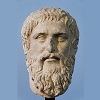6: Western Europe and Byzantium (circa 500-1000 CE)
- Page ID
- 132293
\( \newcommand{\vecs}[1]{\overset { \scriptstyle \rightharpoonup} {\mathbf{#1}} } \) \( \newcommand{\vecd}[1]{\overset{-\!-\!\rightharpoonup}{\vphantom{a}\smash {#1}}} \)\(\newcommand{\id}{\mathrm{id}}\) \( \newcommand{\Span}{\mathrm{span}}\) \( \newcommand{\kernel}{\mathrm{null}\,}\) \( \newcommand{\range}{\mathrm{range}\,}\) \( \newcommand{\RealPart}{\mathrm{Re}}\) \( \newcommand{\ImaginaryPart}{\mathrm{Im}}\) \( \newcommand{\Argument}{\mathrm{Arg}}\) \( \newcommand{\norm}[1]{\| #1 \|}\) \( \newcommand{\inner}[2]{\langle #1, #2 \rangle}\) \( \newcommand{\Span}{\mathrm{span}}\) \(\newcommand{\id}{\mathrm{id}}\) \( \newcommand{\Span}{\mathrm{span}}\) \( \newcommand{\kernel}{\mathrm{null}\,}\) \( \newcommand{\range}{\mathrm{range}\,}\) \( \newcommand{\RealPart}{\mathrm{Re}}\) \( \newcommand{\ImaginaryPart}{\mathrm{Im}}\) \( \newcommand{\Argument}{\mathrm{Arg}}\) \( \newcommand{\norm}[1]{\| #1 \|}\) \( \newcommand{\inner}[2]{\langle #1, #2 \rangle}\) \( \newcommand{\Span}{\mathrm{span}}\)\(\newcommand{\AA}{\unicode[.8,0]{x212B}}\)
Typically, historians have referred to the period between the fall of the Western Roman Empire and the Italian Renaissance (which took place in the fifteenth and sixteenth centuries) as the Middle Ages. The term is still useful because it demonstrates that Europe was undergoing a transitional period: it stood between, in the middle of, those times that we call “modern” (after 1500 CE) and what we call the ancient world (up to around 500 CE). This Middle Age would see a new culture grow up that combined elements of Germanic culture, Christianity, and remnants of Rome. It is to the political remnants of Rome that we first turn.
- 6.2: Western Europe and Byzantium circa 500-1000 CE
- At the eastern end of the church, King Charles of the Franks knelt before the pope. As King Charles knelt, the pope placed a golden crown, set with pearls and precious stones of blue, green, and red, on the king’s head. He stood to his full height of six feet and the people gathered in the church cried out, “Hail Charles, Emperor of Rome!” The inside of the church filled with cheers. For the first time in three centuries, the city of Rome had an emperor.
- 6.3: Byzantium - The Age of Justinian
- During the early 6th century, people living in Italy would have thought the Ostrogothic kingdom was the carrier of Roman ideologies. Within a few decades, this kingdom came to a violent end at the hands of the Eastern Roman Empire, the half of the Roman Empire that had continued after the end of the Empire in the West. (See Chapter 5.) We usually refer to this empire as the Byzantine Empire or Byzantium.
- 6.4: Byzantium - Crisis and Recovery
- After their conquest of Egypt, the forces of the caliphate had built a navy and used it to sail up and lay siege to Constantinople itself in two sieges (674 to 678 and from 717 to 718). To the northwest, the Empire faced the threat of the Bulgars, Slavs, and Avars. Indeed, the Avars demanded that the Byzantine state pay a hefty tribute to avoid raids. At the very moment that the Empire was in greatest need of military strength, it was a poorer empire than it had ever been.
- 6.5: Daily Life in Western Europe and the Byzantine Empires
- Most of the population of the Byzantine Empire live in small villages, living at a subsistence level, and selling what rare surplus they had. Byzantium, like its Western European counterpart, was fundamentally rural.
- 6.6: Byzantine Apogee - The Macedonian Emperors
- The ninth and tenth centuries represented a time of recovery and expansion. The Macedonian Renaissance resulted in a growth of learning among both clergy and lay elites. This growth took place against the backdrop of military success by the emperors of the Macedonian Dynasty (867 – 1056). The first emperor of this dynasty, Basil I (r. 867 – 886), a soldier and servant of the emperor, had come from a peasant background. He seized control of the Empire when he murdered the reigning emperor and too
- 6.7: Conclusion and Global Perspectives
- The period between 500 and 1000 was as transitional for Western Europe and Byzantium as it was for East Asia, the Middle East, and North Africa. Just as the Han State had fragmented politically, and given rise to smaller states ruled by warrior aristocracies, so had the Roman Empire. Just as Mahayana Buddhism had arrived in post-Han China, so too had Christianity become the dominant faith of the Roman Empire and its successors.


